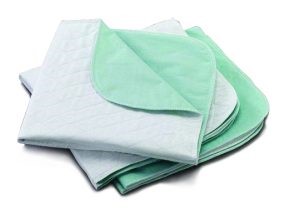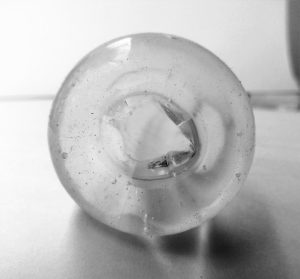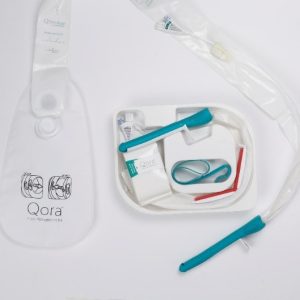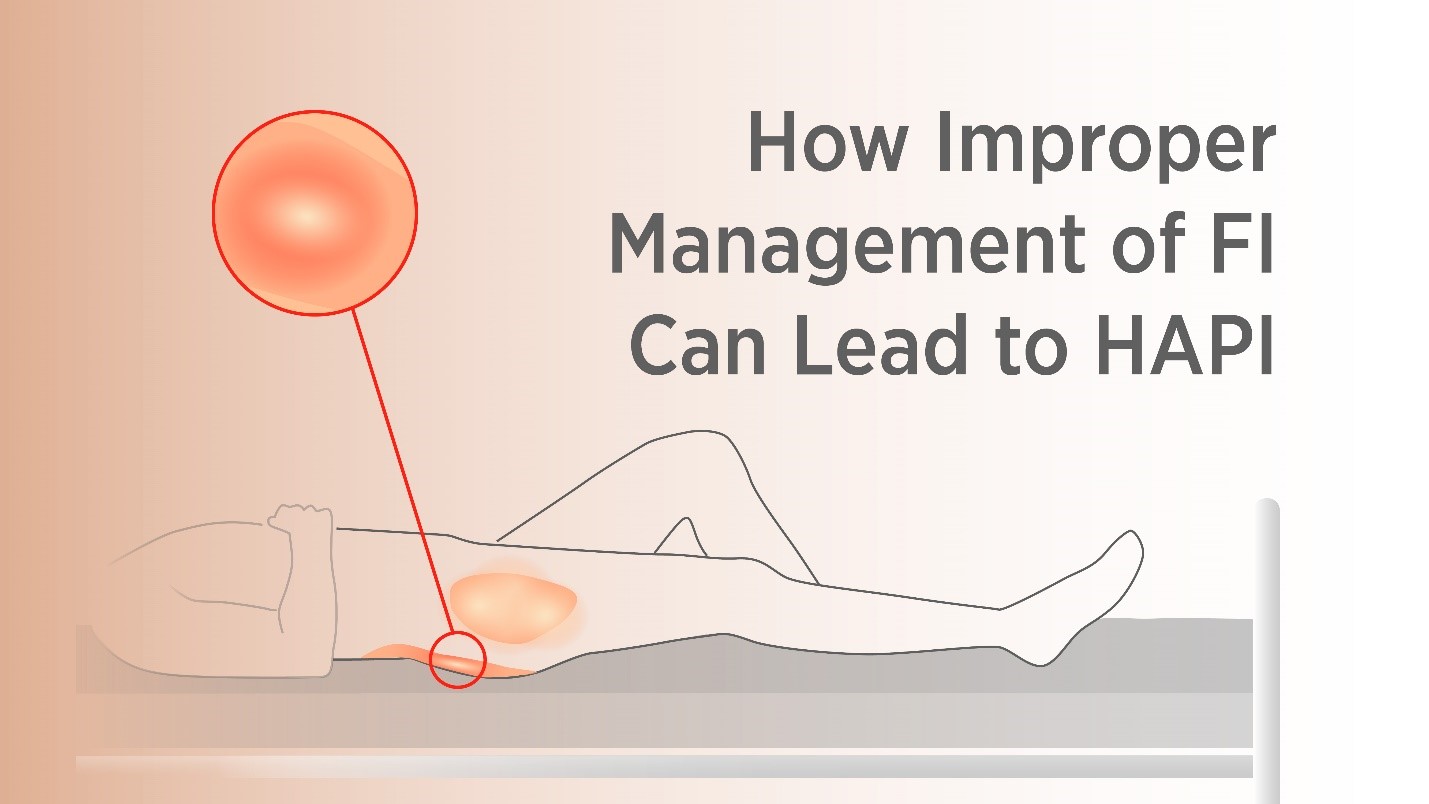Pressure injuries, commonly known as bedsores or pressure ulcers, are prevalent in healthcare settings. These injuries occur due to prolonged pressure on specific body areas, damaging the skin and underlying tissues. These injuries not only cause substantial patient suffering but also result in increased healthcare costs, prolonged hospital stays, and a significant burden on healthcare providers. HAPIs lead to pain, infection, delayed wound healing, and compromised overall patient well-being.
The overall HAPI prevalence for critical care patients is 14.3%. These pressure injuries can cost up to $21,410 per incident and contribute to an additional length of stay ranging from 4 to 20 days
Can Fecal Incontinence lead to HAPI?
Incontinence can contribute to the development of pressure injuries through various mechanisms. Prolonged moisture from incontinence disrupts the natural pH balance of the skin and weakens its protective lipid barrier, rendering it more susceptible to damage. The constant moisture compromises the skin’s integrity, increasing the risk of incontinence associated dermatitis and injury. In addition, incontinence can cause skin irritation and inflammation that impairs blood flow to the affected area. The compromised blood supply hampers the skin’s ability to receive oxygen and nutrients, further elevating the risk of pressure injuries. Furthermore, incontinence can hinder the mobility of bedridden patients, making it challenging for them to reposition themselves adequately. Regular repositioning is essential to redistribute pressure and prevent the development of pressure injuries. Effective management of incontinence is essential to reduce the incidence of hospital-acquired pressure injuries (HAPIs).
Ways of incontinence management
1. Absorbent Pads

Absorbent Pads
Absorbent pads, also known as chucks, are commonly used in low resource healthcare settings as a primary choice management strategy for patients with incontinence. These pads may be inexpensive and can provide temporary relief by containing and absorbing urinary or fecal discharge. However, it is crucial to recognize limitations of absorbent pads in managing incontinence, as they can have potential disadvantages which may contribute to the development of hospital-acquired pressure injuries (HAPIs).
- Skin Irritation: Prolonged exposure to moisture from fecal discharge, combined with the use of absorbent pads, can lead to skin maceration, irritation, and breakdown. The moisture trapped against the skin can disrupt the skin’s barrier function, potentially increasing the risk of HAPIs.
- Friction: The constant movement and friction between the absorbent pad and the skin, particularly during changes or repositioning, can contribute to skin abrasion and increase the risk of pressure injuries.
- Inadequate Absorption: Absorbent pads have a limited capacity, and if not changed regularly, can become saturated, exposing the skin to moisture, increasing the risk of incontinence associated dermatitis. This practice can even be time consuming for healthcare providers and let them not concentrate on other crucial task.
- Heat and Humidity: Prolonged use of absorbent pads can create a warm and humid environment, providing a breeding ground for bacterial and fungal infections. Increased moisture and heat can contribute to the breakdown of the skin protective barrier.
2. Intrarectal Balloon catheter

Intra-rectal Balloon Catheters
Balloon catheter can be utilized as a management option for fecal incontinence. However, the use of balloon catheters can potentially lead to various complications.
- Risk of Skin Irritation: The prolonged presence of an intrarectal balloon catheter can lead to skin irritation and inflammation. Friction between the silicone balloon catheter and the delicate sacral skin may cause redness, soreness, and even skin breakdown if not adequately managed.
- Inadequate inflation – Balloon catheter rest at the anorectal junction and rely on strong sphincter tone to stay in-situ. Inadequate securement of the balloon catheter can cause movement and displacement leading to leakage. The prolonged exposure to effluents can cause weaking of skin integrity.
- Anal erosion: The balloon catheters have a wide profile diameter that can go as high as 13.38mm which causes foreign body sensation and discomfort. The silicone can also cause friction at the anal opening and inside the anal canal, causing anal erosion.
An Effective Stool Management Solution

Qora – A novel, stent based Stool Management Kit
Proper management of incontinence is crucial in preventing hospital-acquired pressure injuries. Healthcare providers can adopt and implement preventive strategies to minimize patient risks, improve clinical outcomes, and reduce cost of care.
- Regular Repositioning: Prioritize the frequent repositioning of patients who cannot reposition themselves adequately. This can be achieved by turning patients from side to side or utilizing specialized devices such as alternating pressure mattresses or cushions. Regular repositioning helps redistribute pressure, relieving vulnerable areas and reducing the risk of pressure injuries.
- Proper Hygiene and Skin Care: Ensure the skin remains clean and dry by promptly addressing incontinence episodes. Thoroughly clean the affected areas and apply barrier creams to maintain skin integrity and provide additional protection. Barrier creams defend against friction and moisture, preventing pressure injuries.
- Using a 100% closed, fecal management system: Qora is a one of it’s kind Stool kit that employs a pliable applicator instead of a high-pressure balloon. The stent conforms around the patient’s anatomy and moves along the anatomy during peristalsis, thus reducing leakage. The sheath is also made with specially designed soft polymers that have reduced diameters at the trans-sphincteric zone (8.05mm) while the sphincter muscles experience strain at over 10mm. This reduces chances of anal erosion and sacral trauma.
The unique design of Qora makes it more versatile. Other IBCs or fecal bag work best for patients with tonic sphincter tone, but they can be problematic for patients with atonic tone. Dealing with an ill-fitting IBC can take up valuable nursing time due to reinsertion, leakage, and clinical complications. Qora is designed to manage patients with tonic or tonic sphincter tone, making it perfect for nearly every patient with fecal incontinence and every healthcare institution providing care to them.
Qora can reduce healthcare associated complications by 30 percent. Fewer complications translate to less nursing time, shorter hospital stays, and decreased risk of lawsuits. To book a free trial, contact [email protected].


2 replies on “How Improper Management of Fecal Incontinence Can Lead to Hospital-Acquired Pressure Injuries”
Hey there, everyone! I just wanted to mention that I really enjoy reading this website’s posts and how often they are updated. It has nice things in it.
Your blog is a constant source of inspiration for me. Your passion for your subject matter shines through in every post, and it’s clear that you genuinely care about making a positive impact on your readers.